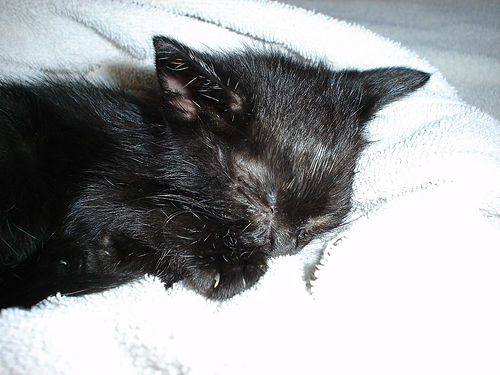Aaron is one of the faculty now but I know him from when he was in residency, about a year ahead of Sebastian. Aaron is one of those people who skipped a bunch of grades and never quite figured out how to relate to people. (There is a small collection of them at the office.) You get the idea: brilliant, but definitely not a people person-- has a tendancy to notice if you're being stupid and feels an overwhelming need to point this out to you.
One he graduated, he went out into private practice and bounced right back into fellowship at the Coroner's, reportedly because the surgeons couldn't stand him. It's the sort of thing you'd imagine happens to a guy like Aaron. So he sort of backed into forensics. I'm not judging; I never figured I'd be here, either. The thing is it's just so darned interesting. But I digress.
Every morning, one of the doctors is assigned to look over the list of cases that need to be done and assign them to the available doctors. They tend to be pretty thoughtful. If you like, say, traffic accidents or gunshot wound homicides, they'll toss those cases your way. (Reportedly, if you complain about a type of case, they tend to steer those away from you. There are two docs who seem to do only the easy stuff and that might be why...) But I've also noticed that if you're good at a type of case, those cases start to get given to you.
Aaron's good at multiple multiples.
I don't know if he coined the term, but what I mean is homicides featuring a multi-modal attack: beaten and stabbed, say, or strangled and beaten and set on fire, or garotted and sexually assaulted and beaten with a hammer. You get the idea.
These cases are, as you may expect, complicated, as they not only combine the findings of each modality, injuries can overlap, multiple attackers can be involved, and questions can arise regarding the lethality of each and every wound (as each defendant points at the others and says okay I hit her/stabbed her/set her on fire but I didn't kill her.) Your diagrams end up full of little numbers and letters and things pointing at other things and your report goes on for page after page after page. Somehow, Aaron can turn one of these things around in a day. (Mere mortals take a full day just for the diagrams and need another to put the report together. )(Obsessive/compulsive types need three days, which I cannot imagine.)
Anyway, the other day, Aaron and I are in the atrium talking about whatever and I ask him how he can turn this stuff around so fast and he tells me his system. In brief:
1) In general: Write the wound number (or letter, see below) in White-out [sp?] on the skin. It stays well even when the body is repositioned or gets wet.
2) For gunshot wounds: If you've got a whole lot of them, don't spend time thinking about which ones connect to each other (entry-exit pairs), just assign each hole a letter, starting at the top of the head and progressing down the front of the torso, down each limb, and then down the back. Make a little chart for your measurements, draw each wound on its own diagram form, and make a summary diagram with all the letters on it. Once you've got them opened up, you can note the entry-exit pairs by number (A=>V, R=>B, and so on) and put that notation in your paperwork wherever it seems to go.
3) For stab wounds: Now this is a judgement call, but you can gently probe the wounds superficially with a short probe to get an idea of direction and take summary photographs with the probes in place (works well for clusters of wounds.)
Well, our conversation was overheard by a passing senior doctor (one of the ones who does a lot of assigning) who naturally assumes that I'm asking about such things because I really want to do these kind of cases (which is true, but to be honest they're a little intimidating) and in a burst of helpfulness he starts assigning me multiple multiples.
Based on my vast hours of experience, I would like to add my own tip:
4) Keep an eye on your tech and bring him to a screeching halt whenever you see blood by saying "ooooh!" in that interested/excited tone of voice that says "we've got something!" and immediately take over dissection in that area.
5) Expect to be surprised. Not all injuries will show up on external examination.
6) Do the neck dissection yourself under photographic control. Palpate carefully before you remove the hyoid and laryngeal cartilages, and expose/photograph any breaks.
Talking with my co-fellow, she had a similar experience: she was asking one of the docs about how to optimally handle young adults who die for no good reason. (She was asking because she hates these kind of cases.) You guessed it, she's overheard and ends up with almost nothing but young people who died for no reason for the next few weeks. Which brings me to tip #7:
7) Ask other people for tips if and only if you are sure no one is listening. Otherwise, you are volunteering.

